Air plants, also known as Tillandsia, are fascinating epiphytes that naturally grow on other plants. They have a wide range of species and varieties, each with its own unique appearance and characteristics.
Understanding Air Plants: Appearance and Characteristics
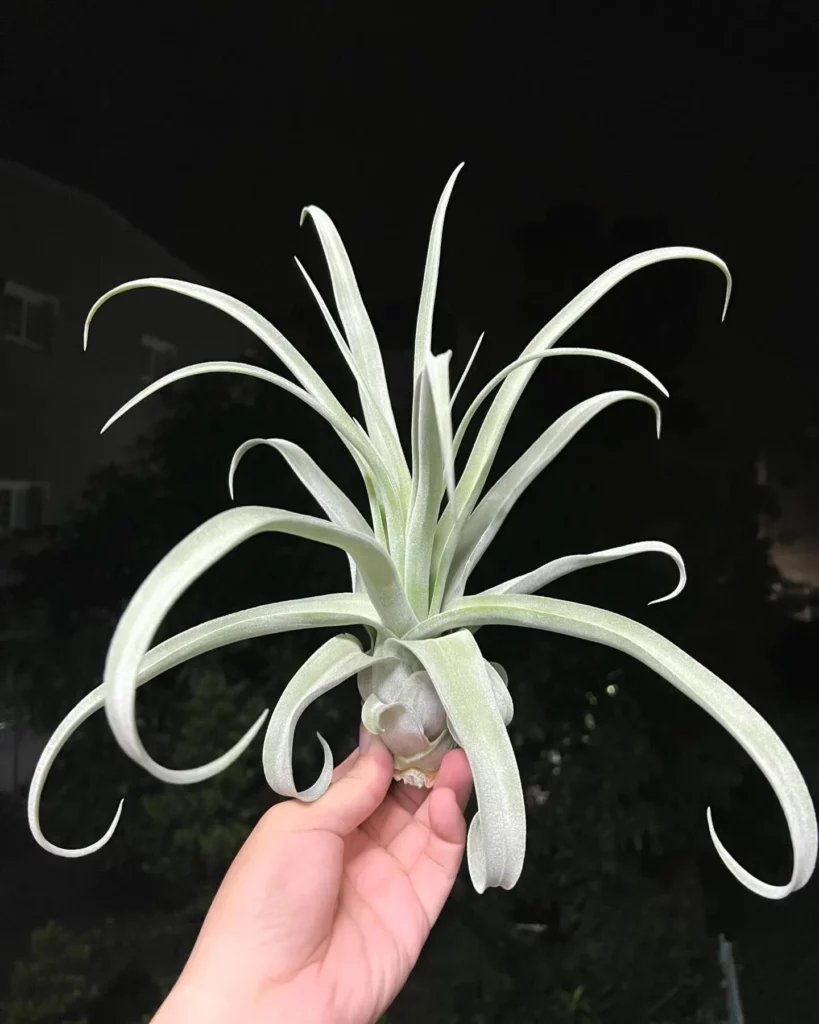
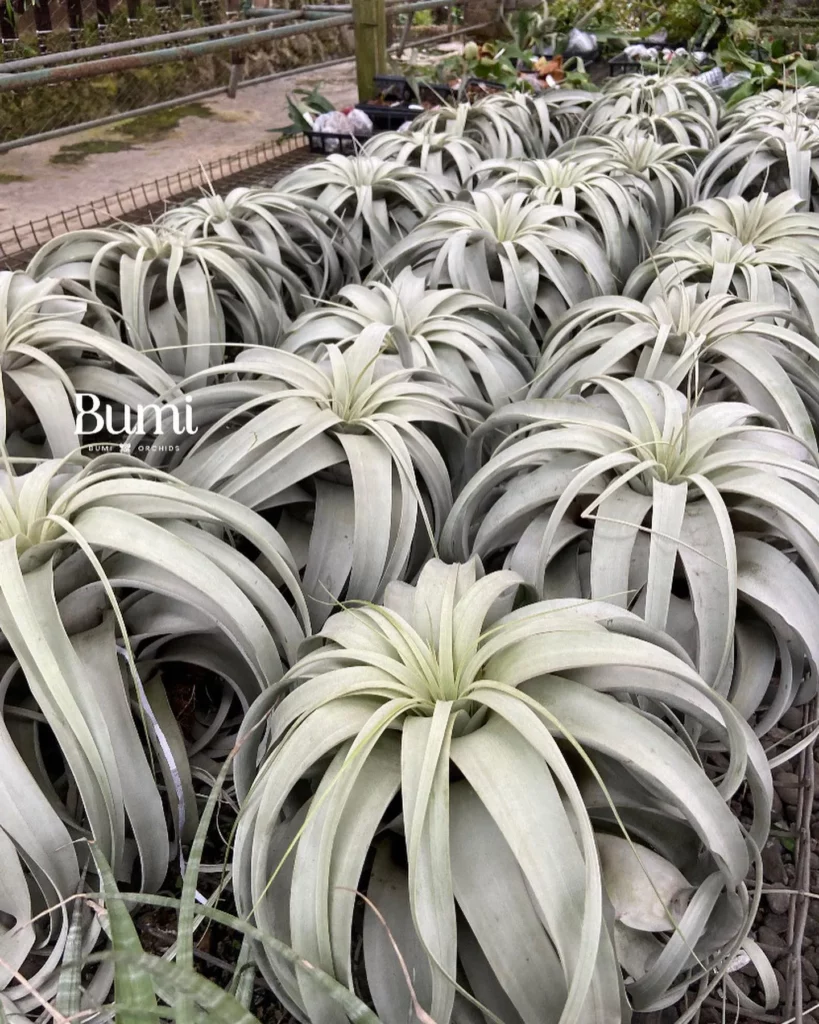

The leaves of air plants come in various shapes, sizes, and colors, adding a touch of natural beauty to any space. Some air plants have silver foliage, which indicates their exceptional drought tolerance. Others boast vibrant colors, such as green, red, or purple, making them eye-catching additions to your indoor garden.
Despite their seemingly delicate appearance, air plants are surprisingly resilient. Most air plants grow to a height of 2 to 12 inches, but in their native tropical locations, they can reach an impressive height of up to 7 feet.
No products found.
To give you a better idea of the stunning variety among air plants, here is a comparison of their appearance and characteristics:
| Air Plant Type | Leaf Shape | Leaf Color | Size |
|---|---|---|---|
| Tillandsia ionantha | Narrow and curly | Green with a hint of red | 2-4 inches |
| Tillandsia xerographica | Broad and wavy | Silver-gray | 10-12 inches |
| Tillandsia bulbosa | Curly and feathery | Green with hints of red or purple | 6-8 inches |
| Tillandsia stricta | Thin and upright | Green, sometimes with pink or purple tips | 3-6 inches |
These are just a few examples of the wonderful diversity found among air plants. Each type offers its own unique visual appeal, ensuring that there is an air plant to suit every taste and style.
Light Requirements for Air Plants

Air plants, also known as Tillandsia, require specific light conditions to thrive and maintain their health. Providing the right amount and quality of light is essential for the optimal growth of indoor air plants.
Air plants thrive in bright, indirect light. Placing them in a location where they receive plenty of light without direct exposure to sunlight is ideal. Direct sunlight can be too intense for air plants and may lead to leaf burn. Instead, aim for a spot with filtered or diffused light.
Some air plant species can tolerate dappled shade or less intense morning sunlight. However, it’s important to consider their natural habitat, which is the sheltered, shady canopy of trees. Mimicking these light conditions will help ensure the overall well-being of your air plants.
No products found.
When choosing a spot for your air plants, consider the light conditions in your home. South or east-facing windows are usually good options as they provide bright, indirect light for a significant part of the day. If you have limited access to natural light, you can also use artificial grow lights to supplement the lighting requirements of your air plants.
Adjusting the placement of your air plants is crucial for maintaining their light requirements. Monitor the growth and appearance of your air plants to determine if they are receiving enough light. If the leaves start to appear dull or lose their vibrant color, it could be a sign of insufficient light. On the other hand, if the leaves become yellow or brown, it may indicate that the plants are exposed to too much direct sunlight.
| Light Intensity | Light Requirements |
|---|---|
| High | Adequate indirect light without direct sunlight |
| Moderate | Dappled shade or less intense morning sunlight |
| Low | Artificial grow lights as a supplement to natural light |
Watering Air Plants Properly

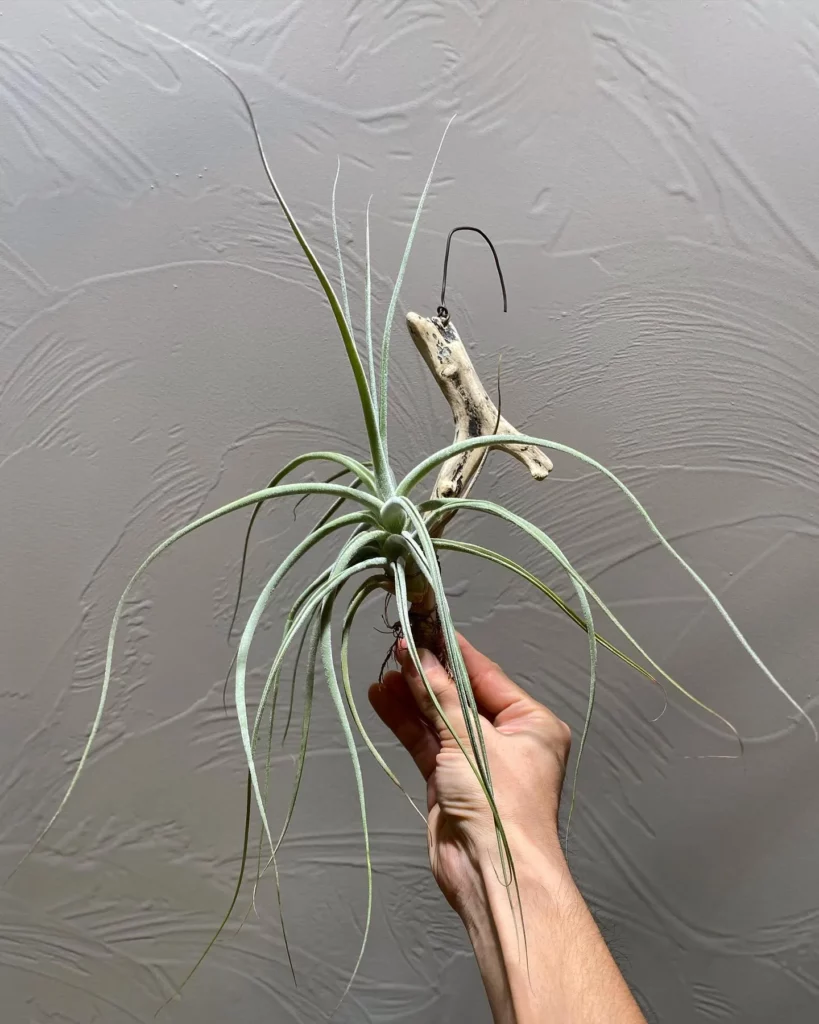
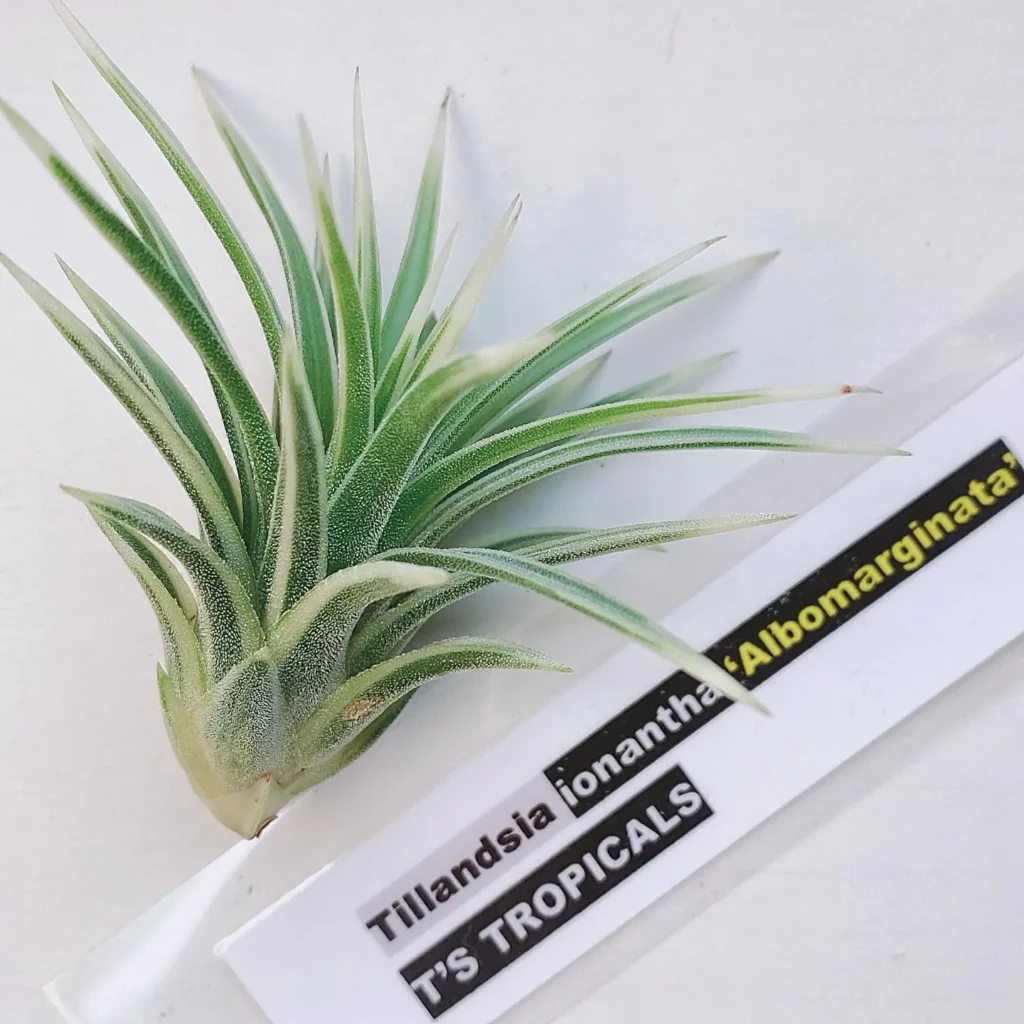
Watering air plants is essential for their survival and healthy growth. To ensure proper care for your air plants, it is important to understand the best watering practices.
Air plants should be watered approximately once a week, or every two weeks for species that are more drought-tolerant. Finding the right balance is key, as over-watering or under-watering can negatively impact their health.
The best way to water air plants is by soaking them in water for about 30 minutes. Fill a bowl or basin with room temperature water and gently place the air plants in the water, ensuring they are fully submerged. This allows them to absorb the water they need to thrive.
After soaking, gently shake off any excess water from the air plants. It is important to let them dry completely before placing them back in their growing areas. This helps prevent rot and other water-related issues.
Remember, it is crucial to avoid letting air plants sit in standing water. They need good air circulation and should not be exposed to constant moisture.
Observing your air plants closely will also help you determine their watering needs. If the leaves start to curl or feel dry, it may be a sign that they need more frequent watering. On the other hand, if the leaves become limp or turn yellow, it may indicate over-watering.
Fertilizing Air Plants

Fertilizing air plants can help promote their growth and overall health, although it is not necessary for their survival. Providing the right nutrients through occasional fertilization can ensure that your air plants thrive.
When it comes to fertilizing air plants, it is best to use a liquid fertilizer specifically formulated for their needs. These fertilizers are readily absorbed by the plants and provide the essential nutrients they require for optimal growth.
When selecting a fertilizer, look for one that is balanced and contains a mix of macronutrients and micronutrients. The macronutrients, such as nitrogen, phosphorus, and potassium, are essential for plant growth, while micronutrients like iron, manganese, and zinc contribute to overall plant health.
Follow the instructions on the fertilizer package for the recommended dosage and frequency of application. Over-fertilizing air plants can be harmful and lead to leaf burn, so it is important to apply fertilizer in moderation.
Here are some tips for fertilizing air plants:
- Use a liquid fertilizer formulated for air plants
- Follow the instructions on the fertilizer package for dosage and frequency
- Avoid over-fertilizing to prevent leaf burn
- Apply the fertilizer to the leaves and avoid getting it on the roots
- Consider supplementing with a diluted seaweed extract for additional plant nutrition
Potting Air Plants

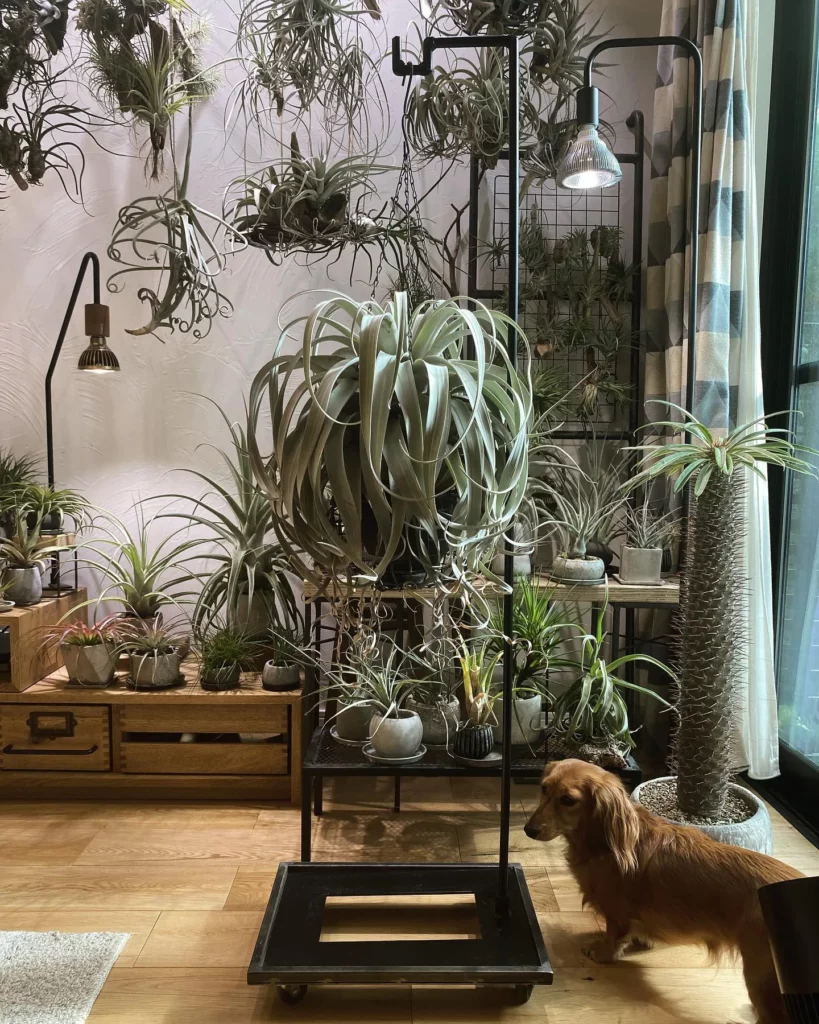

Air plants are unique in that they don’t require traditional potting in soil. Instead, they can be displayed in a variety of creative ways, allowing you to showcase their beauty and enhance your home decor. There are several options for potting air plants that provide both aesthetic appeal and proper care.
Attach to Objects
One option is to attach air plants to objects such as driftwood or magnets. Using hot glue or fishing line, you can secure the air plants to these objects, creating a visually stunning display. This allows you to incorporate air plants into your existing decor, adding a touch of greenery to any space.
Use Specially Designed Containers
If you prefer a more traditional container approach, there are specially designed containers available for air plants. Glass or plastic globes are popular choices, as they provide a clear view of the plants and allow light to reach the foliage from all angles. These containers not only protect the air plants but also serve as beautiful centerpieces or hanging decorations.
| Container Type | Description |
|---|---|
| Glass Terrariums | These enclosed containers provide a mini-ecosystem for air plants, creating a humid environment that mimics their natural habitat. |
| Hanging Globes | Suspended from the ceiling or a wall, these globes showcase the air plants from all angles and add a unique touch to your indoor space. |
| Wall-mounted Planters | These planters can be mounted on a wall, allowing you to create living walls or vertical gardens with air plants as a key component. |
The choice of container should complement or contrast the colorful foliage of air plants, enhancing their visual appeal. It’s important to select a container that provides adequate air circulation to prevent moisture buildup and ensure proper growth.
Propagating Air Plants

Air plants have a unique ability to reproduce through the production of offsets or “pups.” These pups are small plantlets that grow from the base of the mother plant. Propagating air plants through pups is the most common and successful method, as growing them from seeds can be challenging and time-consuming.
Once the pups reach about one-third of the size of the mother plant, they can be safely separated. This typically occurs when the pup has developed its own set of leaves and roots, indicating it is ready to grow independently. Carefully detach the pup from the mother plant, ensuring that it has a small portion of its own root system intact.
After separating the pup, it can be grown individually or left to clump together with other pups, creating a unique and visually appealing display. Air plants are known for their ability to form beautiful clusters, so allowing the pups to grow together can result in a stunning arrangement.
Step-by-Step Guide to Propagating Air Plants:
- Gently remove the pup from the base of the mother plant.
- Ensure the pup has its own set of leaves and roots.
- If necessary, trim any damaged or brown roots.
- Place the pup in a suitable growing medium or attach it to a decorative object.
- Provide the pup with the same care and conditions as the mother plant.
- Monitor the pup’s growth and adjust care as needed.
| Pups Propagation Tips | Pups Propagation Benefits |
|---|---|
| Separate pups when they are one-third the size of the mother plant. | Expand your air plant collection without purchasing new plants. |
| Ensure each pup has its own set of leaves and roots. | Create unique and visually appealing displays with clustered air plants. |
| Trim damaged or brown roots before planting the pup. | Enjoy the satisfaction of successfully propagating air plants. |
| Provide the pup with the same care as the mother plant. | Add natural beauty to your home or office with a thriving air plant collection. |
Growth and Development of Air Plants


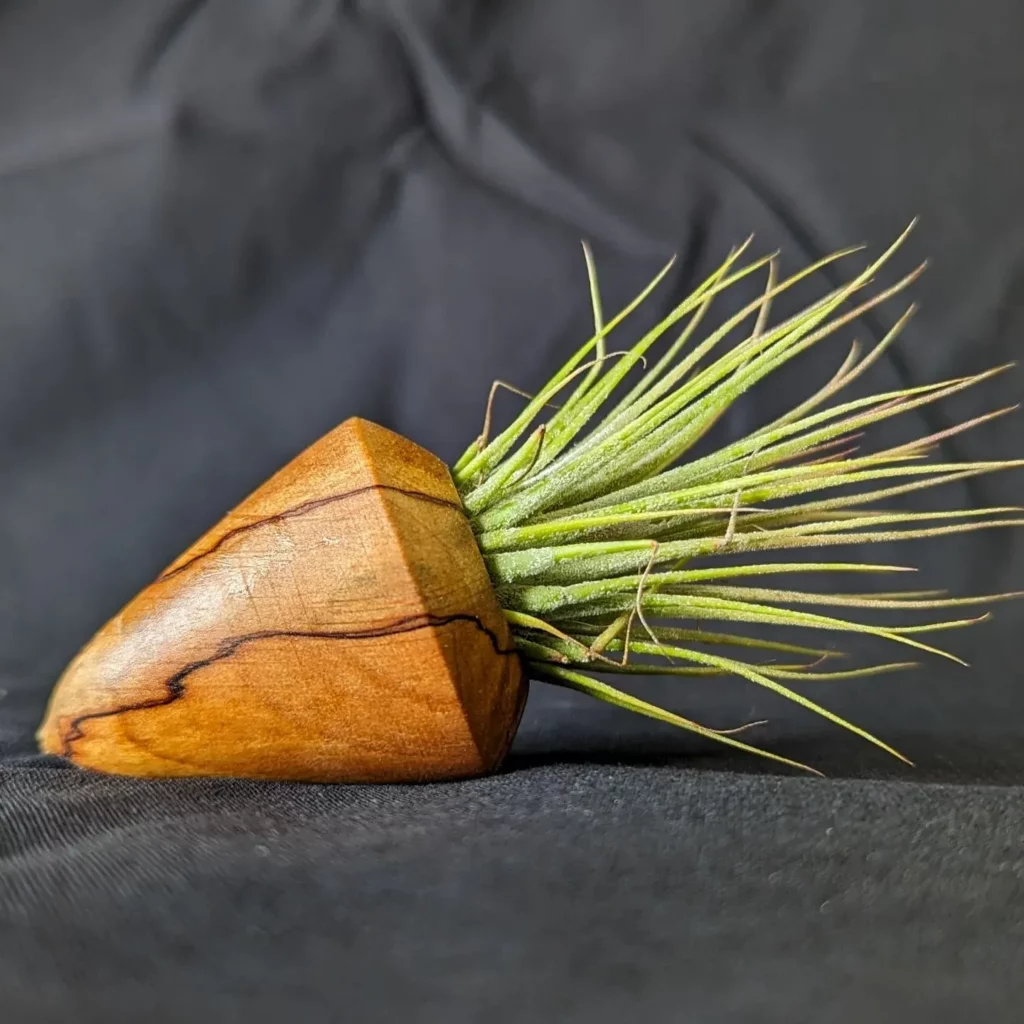
Air plants have a fascinating life cycle that contributes to their unique charm and beauty. They go through different stages of growth and development, showcasing stunning flowers and producing offspring known as pups.
When an air plant reaches maturity, typically within a couple of years, it enters the flowering stage. This is an exciting time as the plant produces vibrant and diverse flowers in various colors, including shades of purple, pink, red, and yellow. The flowers can last for several weeks, creating a stunning display that adds a touch of elegance to any space.
After the blooming period, the air plant continues its life cycle by producing pups. These pups are miniature versions of the parent plant that grow from the base or sides of the parent plant. Over time, these pups will mature and develop their own root systems, ultimately becoming independent air plants.
The ability of air plants to produce pups offers an exciting opportunity for growth and expansion. With proper care and propagation techniques, a single air plant can give rise to multiple pups. This allows for a continuous cycle of growth and development, ensuring the longevity and sustainability of these captivating plants.
Air plants can live for several years, with some species even living indefinitely when provided with the right conditions. Their ability to produce pups and propagate ensures that their legacy continues, even after the parent plant reaches the end of its life cycle.
Dealing with Pests and Diseases

Air plants are known for their resilience and resistance to pests and diseases. However, there may be instances when they can be affected by pests like mealybugs or scale insects. It is important to promptly address any pest infestation to maintain the health of your air plants.
If you notice signs of pests on your air plants, such as small white cotton-like spots (mealybugs) or small shell-like bumps (scale insects), it is essential to take immediate action to prevent further damage.
Here are some steps you can take to deal with pests and diseases on your air plants:
- Isolate the affected plant: If you spot pests on one of your air plants, it is crucial to isolate the infested plant to prevent the spread of pests to other plants.
- Remove pests manually: Gently remove the pests by hand using a damp cotton swab or a soft brush. Ensure thorough coverage of all affected areas, including the underside of leaves and the base of the plant.
- Monitor and repeat: Regularly check the isolated plant for any signs of recurring pests. If you notice any, repeat the manual removal process.
It is important to note that neem oil, a commonly used natural pesticide, should not be used on air plants. Neem oil can create a barrier on the leaves, preventing the absorption of water and nutrients, which can adversely affect the plant’s health.
Pests and diseases can often be avoided by providing proper care to your air plants. Over-watering, insufficient light, and improper air circulation can weaken the plants and make them more susceptible to pests and diseases.
Longevity and Maintenance of Air Plants
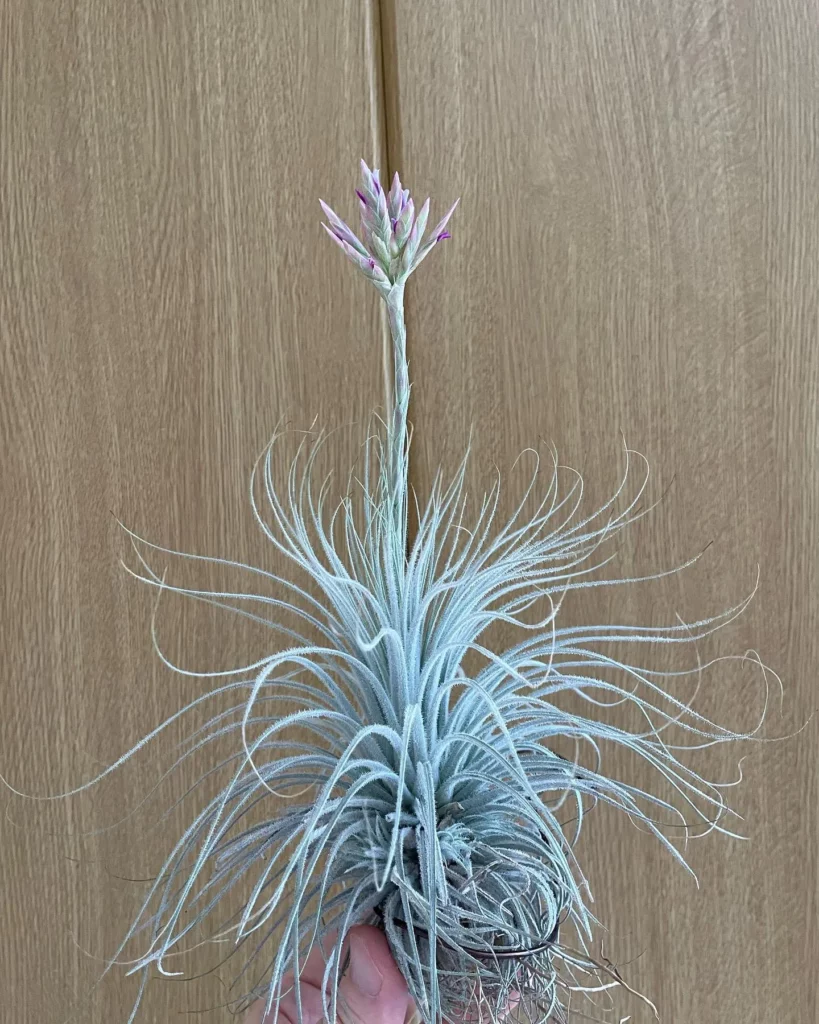
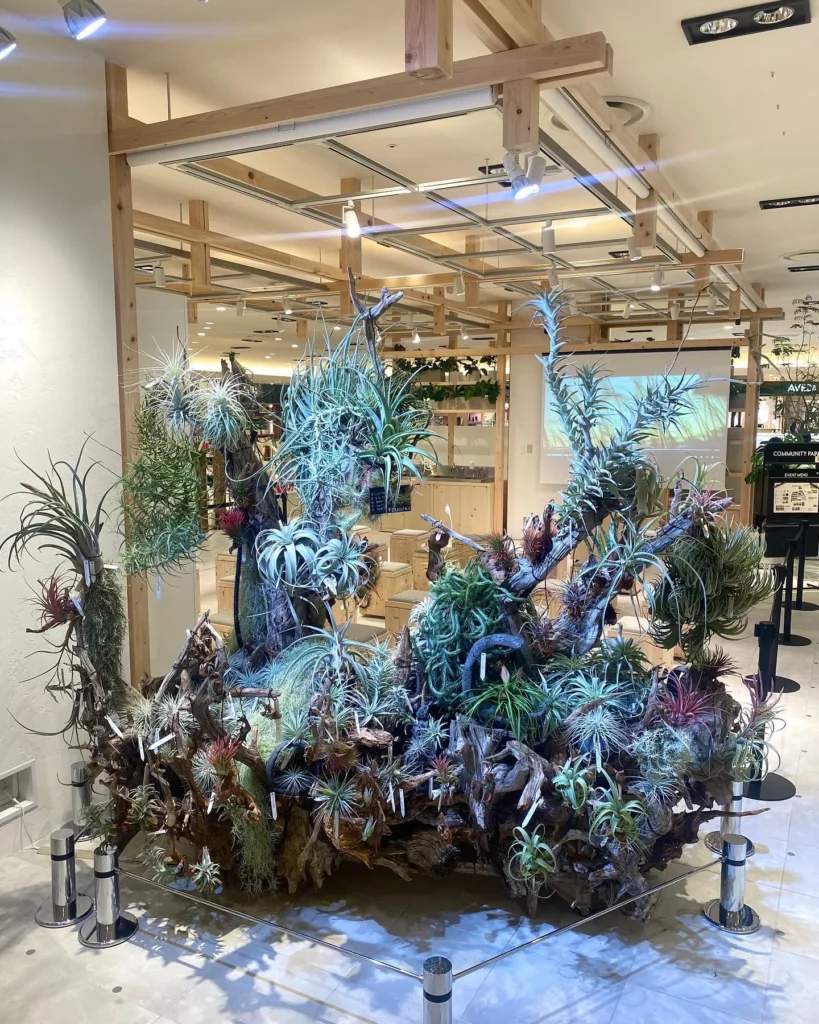
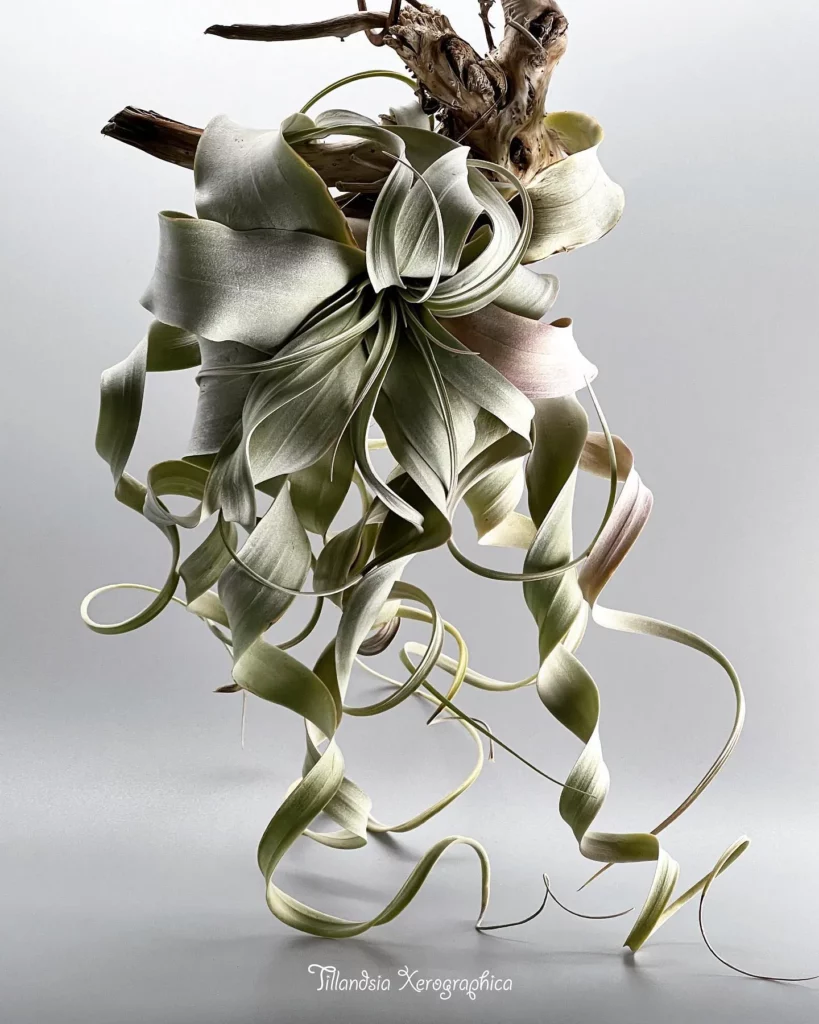
Air plants, with their unique characteristics and stunning foliage, can bring a touch of natural beauty to any space. To ensure the longevity and health of your air plants, proper care and maintenance are essential. By providing the right conditions and meeting their specific needs, you can enjoy the beauty of these fascinating plants for years to come.
Lighting: Finding the Ideal Spot
Air plants thrive in bright, indirect light, so it’s important to find the perfect spot for them in your home. Place your air plants near a window where they can receive plenty of natural light without being exposed to direct sunlight. Keep in mind that different species have varying light requirements, so it’s essential to consider their individual needs. Adjust the placement accordingly to ensure they get the optimal amount of light.
Watering: A Delicate Balance
Proper watering is crucial for the health of your air plants. Although they don’t require soil, they still need moisture to survive. Mist the plants with water or soak them in a bowl of water for about 30 minutes once a week. After soaking, gently shake off any excess water and allow the plants to dry completely before placing them back in their designated spot.
Fertilizing: Boosting Growth Occasionally
While air plants can survive without fertilization, occasional feeding can help promote their growth. Use a liquid fertilizer specifically formulated for air plants and follow the instructions on the package. Be sure not to over-fertilize, as it can harm the plant. Moderation is key when it comes to providing the necessary nutrients.
Pest and Disease Control: Being Vigilant
Air plants are generally resilient to pests and diseases, but it’s important to be vigilant and address any issues promptly. Inspect your plants regularly for signs of pest infestation, such as mealybugs or scale insects. If you spot any pests, gently remove them with a damp cotton swab. Avoid using neem oil on air plants, as it can interfere with water absorption and harm the plant.
Creative Display Ideas for Air Plants

Air plants offer endless possibilities for creative and eye-catching displays. Their unique characteristics and ability to thrive without soil make them ideal for creating stunning plant decor in any space. Here are some creative display ideas to showcase the beauty of air plants:
1. Terrariums: Place air plants in glass terrariums for a miniature garden effect. Add decorative elements like pebbles, moss, or miniature figurines to enhance the visual appeal.
2. Natural Elements: Attach air plants to natural objects such as sea shells or driftwood using fishing line or hot glue. Let your imagination run wild and create captivating compositions that bring a touch of nature into your home.
3. Group Arrangements: Arrange multiple air plants together in groups to create a visually stunning display. Play with different colors, shapes, and sizes to achieve a harmonious arrangement.
4. Combining with other plants: Pair air plants with other plants like orchids or succulents to create an interesting plant ensemble. The combination of different textures and foliage will add depth and visual interest to your space.
5. Wreaths and Hanging Mobiles: Create unique and whimsical decor by arranging air plants in a wreath or hanging mobile. Hang them near windows or in spaces that need a pop of greenery.
FAQ
What are air plants and how do I care for them?
Air plants, also known as Tillandsia, are unique houseplants that do not require soil to grow. They thrive in a variety of environments and have specific care requirements, including light, watering, fertilizing, potting, propagation, and pest control. To care for air plants, you need to provide them with adequate light, water them properly, occasionally fertilize them, display them creatively, propagate them through pups, and address any pest or disease issues promptly.
What do air plants look like and what are their characteristics?
Air plants are epiphytes that typically grow on other plants in their natural habitat. They come in different species and varieties, with leaves that have a variety of shapes and colors. Some air plants have silver foliage, indicating their drought tolerance, while others have brighter colors. Most air plants grow to a height of 2 to 12 inches, but can reach up to 7 feet in their native tropical locations.
What are the light requirements for air plants?
Air plants thrive in bright, indirect light. They should be placed in a spot where they receive plenty of light without being exposed to direct sunlight. Some species can tolerate dappled shade or less intense morning sunlight. It is important to consider the natural habitat of air plants, which is the sheltered, shady canopy of trees. Adjust the placement of air plants accordingly to ensure they receive the optimal amount of light.
How often should I water air plants?
Watering air plants is crucial for their survival and healthy growth. They should be watered about once a week, or every two weeks for more drought-tolerant species. The best way to water air plants is by soaking them in water for about 30 minutes. After soaking, gently shake off excess water and allow the plants to dry completely before placing them back in their designated growing areas. It is important to prevent air plants from sitting in standing water, as it can lead to rot.
Do air plants need to be fertilized?
Fertilizing air plants is not necessary for their survival, but occasional fertilization can help promote their growth and overall health. It is recommended to use a liquid fertilizer specifically formulated for air plants. Follow the instructions on the fertilizer package and avoid over-fertilizing, as it can burn the leaves and harm the plant. Fertilizing air plants should be done in moderation to provide them with the necessary nutrients without causing damage.
How do I pot air plants?
Air plants do not require traditional potting in soil. Instead, they can be displayed in a variety of creative ways. They can be attached to objects like driftwood or magnets using hot glue or fishing line. Air plants can also be placed in specially designed containers like glass or plastic globes. The choice of container should complement or contrast the colorful foliage of air plants, and provide adequate air circulation.
How do I propagate air plants?
Air plants reproduce through the production of offsets, also known as “pups”. These pups can be separated from the mother plant once they reach about one-third of its size. They can be grown individually or left to clump together, creating a unique and visually appealing display. Propagating air plants through pups is the most common and successful method, as growing them from seeds can be challenging and time-consuming.
What is the growth and development cycle of air plants?
Air plants have a unique life cycle. They bloom only once in their lifetime, producing beautiful flowers of various colors. After blooming, the plant will continue to produce pups, which can mature and produce their own flowers in the future. Air plants can live for several years, and with proper care and propagation, a single plant can produce enough pups to live indefinitely.
How do I deal with pests and diseases on air plants?
Air plants are generally resistant to pests and diseases, but they can occasionally be affected by mealybugs or scale insects. If pest infestation occurs, isolate the affected plant and remove the insects by hand using a damp cotton swab. It is important to avoid using neem oil on air plants, as it can create a barrier on the leaves that prevents water absorption. Most air plant problems are caused by improper care, such as over-watering or insufficient light.
How long do air plants live and how do I maintain their health?
The lifespan of an individual air plant can range from two to five years, but a single plant can produce enough pups to live indefinitely. To ensure the longevity and health of air plants, proper care and maintenance are crucial. This includes providing adequate lighting, watering, fertilizing, and addressing any pest or disease issues promptly. Regular monitoring and attention to the needs of air plants will help them thrive and continue to beautify your space.
What are some creative ways to display air plants?
Air plants are versatile and can be displayed in various creative ways. They can be placed in terrariums, attached to objects like sea shells or driftwood, or arranged in groups to create interesting displays. Air plants can also be paired with other plants like orchids or arranged in a wreath or hanging mobile. The lack of soil allows for endless possibilities in showcasing air plants, adding unique greenery and visual appeal to any space.





